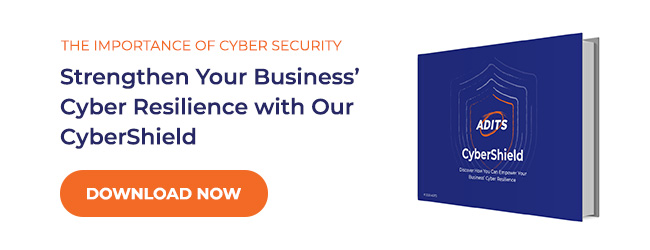With a report of cybercrime every 6 minutes in Australia, Cyber security compliance has become more than a regulatory requirement, it is a crucial aspect of safeguarding your business against cyber threats. Australian small and medium-sized businesses (SMBs) face unique challenges in navigating these compliance standards and it can be daunting.
However, with the right guidance and tools, achieving and maintaining compliance can unlock greater protection and stronger reputation. This is why in this article we’ll go through:
- Understanding the Challenges SMBs Encounter with Cyber Security Compliance
- Compliance vs. Cyber Security
- Key Laws, Regulations, and Standards for Cyber Security in Australia
- Your Roadmap to Your Cybersecurity and Industry Data Compliance
Understanding the Challenges SMBs Encounter with Cyber Security Compliance
- Limited Resources: SMBs often have limited financial resources and manpower compared to larger enterprises. This can make it challenging to invest in cyber security and dedicated compliance efforts.
- Lack of Expertise: SMBs may lack in-house dedicated IT staff who can handle cyber security and compliance. Achieving and maintaining compliance also requires significant investments in technology and training.
- Complexity of Regulations: Cyber security regulations and standards can be complex and constantly evolving. SMBs may struggle to understand and interpret the requirements, especially if they operate in multiple industries with varying compliance obligations.
- Balancing Compliance with Business Operations: SMBs often face the challenge of balancing compliance requirements with day-to-day business operations. Compliance measures may require changes to existing processes which could impact productivity and efficiency.
- Keeping Up-to-date with Technology Advancements: Rapid advancements in technology introduce new cyber security risks and challenges for SMBs. Staying ahead of these developments and implementing relevant security measures can be daunting.
- Data Protection and Privacy Concerns: SMBs handle sensitive customer and business data, making them attractive targets for cyber-attacks. Compliance with data protection and privacy regulations, such as the Australian Privacy Principles, adds another layer of complexity to their cyber security efforts.
Compliance vs. Cyber Security
Whilst the difference is subtle, it’s important to understand that:
- Compliance is about following the laws and regulations for protecting information from being stolen or compromised.
- Cyber security is the practice of shielding IT infrastructures against cyber threats through different means, whether required by law or not.
Compliance exists to meet legal obligations that are meant to protect businesses and individuals. Cyber security refers to the systems and controls a business implement to protect its own assets, and compliance is one way to do that
Cyber Security Compliance Standards: Why It is Relevant to Your Business
Cyber-attacks can be very harmful to SMBs. From financial losses to reputational damage, the outcomes can be disastrous. Compliance with cyber security regulations and standards serves as a foundational step in reducing those risks.
Although compliance is just one aspect of a comprehensive cyber security strategy, businesses can expect to:
- Boost your protection against cyber threats
- Avoid fines, legal fees, and lost revenue
- Be deemed as a responsible business
- Build trust among stakeholders
- Gain a competitive edge
Key Laws, Regulations, and Standards for Cyber Security in Australia
Navigating cyber security compliance in Australia requires organisations to align with various regulations, standards, and frameworks, including the Essential Eight and the Privacy Act.
These are used for organisations to assess their cyber security posture, identify gaps, and implement appropriate measures.
Achieving compliance with cyber security regulations not only helps organisations protect sensitive data and systems but also enhances trust and confidence among stakeholders.
Depending on your industry, you must also comply with additional regulations as described below:
| INDUSTRY | LAW/REGULATION |
Cross Sectors |
|
Healthcare & Medical Services |
|
Not-For-Profits |
|
Professional Services |
|
Education |
|
E-Commerce |
|
Critical Infrastructure |
|
Your Roadmap to Cybersecurity and Industry Data Compliance
Businesses may have some flexibility in how they implement compliance measures, but there are specific requirements outlined in laws, regulations, and standards that must be met. Failure to comply with these requirements can result in legal consequences, penalties, or other enforcement actions which it what we explain to Board members and Executives in our tailored cyber security training.
This is why we put together a step-by-step checklist you can follow to help you in your quest for compliance.
Step #1: Risk Assessment
Identify the cyber security risks that your business faces and assess their likely impact. This will help you prioritise your cyber security efforts and allocate resources. Your risk assessment must include analysing your assets, data, systems, processes, and people.
Some questions to ask in this step are:
- What are your most valuable and most sensitive data and digital assets?
- How do you store, access, and share your data?
- Who are the authorised and unauthorised users of your data and systems?
- What are the possible sources and methods of cyber-attacks?
- How would a cyber-attack affect your:
- Business operations?
- Finances?
- Reputation?
By assessing your cyber security risks, you can align your cyber security strategy with your business objectives and priorities. This is a crucial foundation for your next steps. Cyber security risks are ever evolving, so risk assessment should be an ongoing process with regular reviews and updates.
Step #2: Cyber Security Compliance Planning
Develop a cyber security plan that outlines your goals, strategies, actions, and responsibilities. This will comprise business’ compliance policies and protocols. Make sure everything aligns with your business objectives, budget, and resources. Make your plan realistic, measurable, and adaptable to changing circumstances.
Aligning your compliance and cyber security with your overall IT strategy can help you to stay ahead of updates to regulatory compliance. More so, it can fortify your protection, heighten customer trust, and increase your competitive edge. A cyber security partner can guide you toward such alignment.
Step #3: Cyber Security Compliance Implementation
Turn your compliance plan to action starting with communicating it to your entire organisation. Make sure each person understands its importance, so they can all be on board with your plan. Going a step further, you can nurture a compliance mindset into your business culture, with corresponding staff training throughout your organisation.
Implementation is optimal when your IT partner collaborates with your departments and external partners, ensuring a consistent and coordinated approach to cyber security compliance.
Step #4: Compliance Record Keeping
Make sure you keep records of everything. Keeping records attests to being compliant, accountable, transparent, and proactive in managing cyber risks. Documentation can show to your stakeholders, customers, regulators, and auditors your compliance performance and your commitment to safeguarding their digital assets.
Well-kept records enable you to monitor and improve your cyber security compliance over time. They can show you gaps, weaknesses, trends, and best practices to help improve your decision-making, planning, and review processes.
Proper documentation can also support your business’ resilience and recovery in the event of a cyber incident, help restore normal operations, investigate the root causes, analyse the impacts, and implement the lessons learned. When that happens, it is very important that you have records of personal information holdings, data flows, privacy policies, consent forms, contracts, and other APP-compliance documents.
Step #5: Cyber Incident Reporting
As soon as you are made aware of an attack on your business, you need to notify many relevant parties as described in the Information Security Manual (ISM) from the Australian Cyber Security Centre (ACSC).
It includes reporting and notification requirements, such as:
- Internal: Relevant personnel within your organisation should be informed immediately.
- Government:
- Go to the ReportCyber platform or call the ACSC hotline at 1300 CYBER1 (1300 292 371).
- In Queensland, you have to also report to the Office of the Information Commissioner (OIC).
- Industry Regulators: Specific regulators may need to be notified, depending on your industry.
- Law Enforcement Agencies: If the incident involves criminal activity, consider notifying law enforcement. In Queensland, that would be the Financial & Cyber Crime Group.
- Affected Individuals or Customers: If personal data is compromised, you have to inform affected individuals or customers.
You’ll need to use secure communication channels to prevent further compromise.
When reporting or notifying, describe the incident, including the nature of the compromise, affected systems, and potential impact. You may also outline actions taken to contain and mitigate the incident.
Cyber Security Services for Townsville & Brisbane Businesses
The legal requirements for cyber security and data privacy can vary depending on the type of organisation and the nature of the data being handled. Therefore, it’s recommended that you seek advice to ensure compliance with all relevant laws and regulations.
At ADITS we developed a tailored cyber security solution built around managed IT, essential security controls, and compliance for a multitude of industries. We help you structure your data and processes so you can ensure compliance with the relevant regulations. Check out our CyberShield brochure today or get in touch with our cyber security experts.



